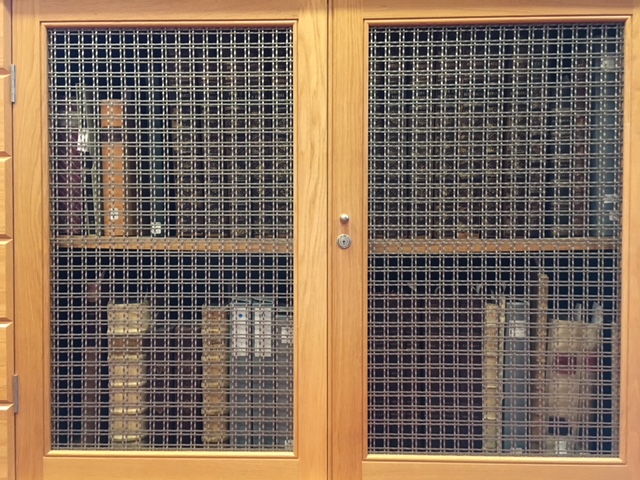What’s in a library? “Information” is perhaps the most exhaustive answer to that question. But what counts as information, and who decides? Even as library trainees, especially in a digital age, we might be tempted to think of the words on the page as rather abstract concepts, rather than of their shape, the page that carries them, the material book that preserves them, or any of the ways in which the physical material of library and archive collections – paper, pictures, binding, type – can be meaningfully shaped. These, however, are important things, and not only for the archivist. On this blog, we like to think about questions like this, and highlight the library talks and events that suggest them. Because that is another thing that can be in a library: discussion, the library as a space for figuring out its own role, the nature of books, images and text, and the ways they interact with and are shaped by their social context. A library is anything but silent. Just like a book is anything but silent, and its very materiality can itself serve as a medium for relevant artistic expression. More than that: as Tia Blassingame argued at the Weston Library this week, the artist book – art in the form of the book – can serve as a ‘vehicle for social change and racial unity’.

Tia Blassingame, an example of whose work is featured in the new Weston Library exhibition Alphabets Alive!, is a book artist, printmaker, educator, Associate Professor at Scripps College, current printer in residence at the Bodleian Bibliographical Press, and founder of the Book/Print Artist/Scholar of Color Collective. Her talk, ‘We Rise (Together): Taking and Making Space for BIPOC Book Arts Creatives, Cultures, and Histories’ (part of the We Are Our History Conversations at the Bodleian), presented the work of the Collective in advocating for and forging collaborations between BIPOC/Global Majority book artists and scholars, illustrated by a wealth of wonderful photographs. Its audience was introduced to, among many other works and artists, the giant pop-up books of Colette Fu celebrating ethnic minorities in China, the traditional handmade Korean paper (Hanji) dresses of Aimee Lee, Colette Gaiter‘s handcrafted editions of Black Panther artist Emory Douglas’ writing, and the woven book art of Skye Tafoya. It was interesting to see how books can evoke meaning not only in the words and information that they contain, but in their actual physical composition, like Sun Young Kang’s work In Between Presence and Absence, I. And fascinating questions were asked: what qualifies as paper, for instance, and why? What if we remove those qualifiers, and see links between fibre-working traditions from Hawaii to Korea? What if quilting might be regarded as a very meaningful African American paper making tradition?
Amidst all her examples, from paper cast sculptures over Japanese woodblock printing to miniature illumination and experiments in bookbinding, Tia Blassingame was pointedly sparse in talking about her own work in letterpress and print. Instead, she practised the solidarity at the heart of the Collective’s purpose of what she called taking and sharing space, through project grants, artist residencies, and celebrating members’ work. At the same time, she also noted the importance of established institutions’ (like the Bodleian) and individuals’ allyship – making space, through fundraising assistance, commissions, and more thoughtfulness in giving space to artists and scholars. A thought-provoking talk, that opened up to us the social aspects of book arts, as well as the material side of library information, and how the library can be a venue for discussing and creatively thinking about both.




 Hello all, I am James and I am completing my graduate traineeship at the Bodleian Library. Unlike many of the college and faculty libraries, the Bodleian gives the trainee the opportunity to experience many different departments, both on the frontline and behind the scenes. Currently I am working in the Rare Books room and helping out with the John Johnson Project. I also edit the OULS newsletter Outline.
Hello all, I am James and I am completing my graduate traineeship at the Bodleian Library. Unlike many of the college and faculty libraries, the Bodleian gives the trainee the opportunity to experience many different departments, both on the frontline and behind the scenes. Currently I am working in the Rare Books room and helping out with the John Johnson Project. I also edit the OULS newsletter Outline.
Recent Comments